Anyone who has not built a house, not grown son, not dug a well, and planted a tree, lived a life in vain.
Moldovan Proverb
Mme Elisabeth Lesoeur had presented me with something of a dilemma.
When I had told her the previous day of my plan to walk the old Roman road to Brienne Le Château via Coole and Donnement, she had thrown up her hands in horror and exclaimed ‘ But no. You cannot miss Saint- Amand-sur-Fion. It is the most beautiful village in France’. This was, after all, quite some claim. But then who was I to argue. I decided to go away and do some research into her suggestion.

I’d originally decided to take the VF ‘high route’ along the old roman road along which Sigeric would have travelled in 990 AD, in order to take a short cut to Brienne Le Château and shave 47km and 2 days from my itinerary. But feedback from other pilgrims who’d recently walked the route suggested that it was pretty monotonous walking and facilities en route were virtually non existent. It didn’t take me long to make the decision to follow Mme Lesoeur’s advice even if it meant re-jigging my schedule slightly.
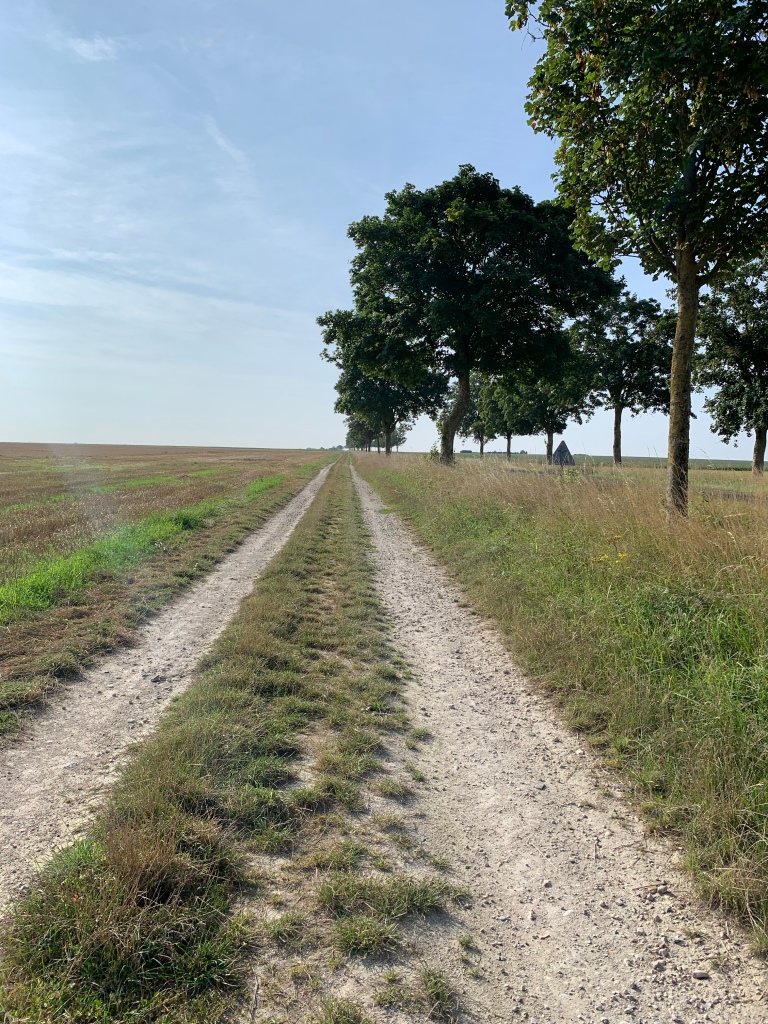
“Make sure you send me a postcard when you get to Lausanne” Mme Lesoeur joked as she saw me off this morning. I racked my brains to try and remember when I last sent anybody a postcard, but failed. I promised her I would! Breakfast had given me the strength to agree to anything.

As I headed out of Châlons en Champagne via the Grand Jard, I couldn’t help but remember the kingfisher I had seen the previous day, skimming over the water in front of the Cathedral. Known as a ‘martin – pêcheur’ in French I wondered what had been the significance of seeing it.

According to the ancient Greeks, kingfishers built their nests on a raft of fish bones and, having laid their eggs, they set the nest afloat on the Mediterranean sea and incubated the eggs for seven days before and after the winter solstice.
In order to facilitate this it was said the gods always made sure that the seas and winds were calmed during this period. The Greek name for Kingfisher is halcyon, leading to the term ‘halcyon days’ which was originally a reference to the calm and fine weather at this time in Greece. We now use the term to refer to fondly remembered times in our past.
The name halcyon itself comes from the Greek goddess, Alcyone who was married to Ceyx. According to legend the couple were happily married but made the mistake of calling each other Zeus and Hera, which angered the real god Zeus who in bad temper killed Ceyx by sinking his ship with a thunderbolt.

On hearing this, Alcyone, wrought with grief, threw herself into the sea and drowned. Out of compassion, however, the gods later changed them both into beautiful flashing blue halcyon birds named after her and recognised in the kingfisher’s scientific name of Alcedo, after Alcyone.
A kingfisher, said to be the first bird to fly from Noah’s ark after the deluge, supposedly received the orange of the setting sun on its breast and the blue of the sky on its back. It was considered a symbol of peace, promising prosperity and love. So perhaps yesterday’s kingfisher sighting was a good omen!
There was a definite hint of autumn in the air as I headed out of Châlons this morning. The fog only really began to lift towards midday.
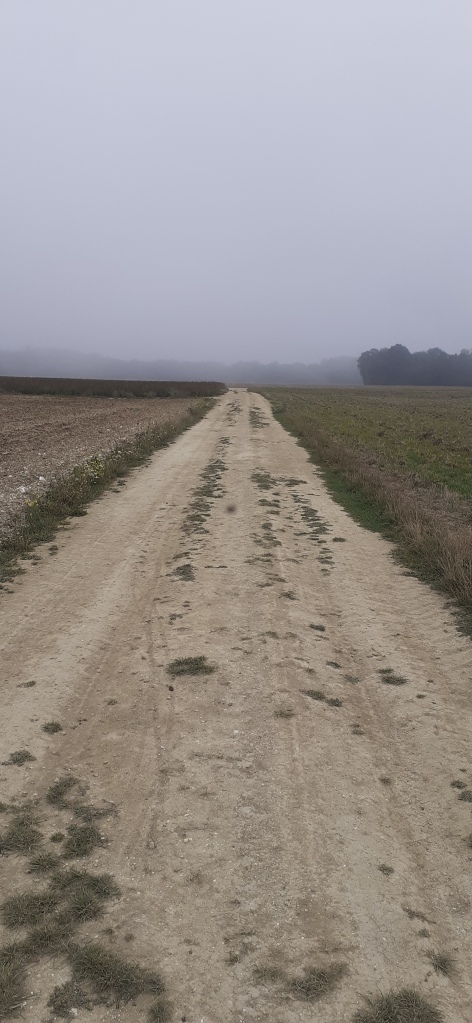
The landscape was pretty unremarkable – fields of maize and sunflowers and not another soul to be seen all morning, not even a solitary cyclist.

After lunch the VF rejoined the canal for what seemed like the umpteenth time over the last few days. Thankfully, however, this time the towpath hadn’t been covered in tarmac. If my feet had been able, they would have breathed a sigh of relief! But as for walkers, joggers, cyclists or fishermen, there wasn’t a sniff. The region appeared to be completely deserted.
And then at around 1.30pm, just as I was despairing that I wouldn’t meet another soul all day, just outside the small village of Chaussée sur Marne, another pilgrim suddenly appeared out of nowhere.

His name was Baptiste and he was walking to Rome. Aged 27 he was taking a sabbatical from his marketing job in Arras. His girl friend and another friend were due to join him at Saint-Amand-sur -Fion. As for where he planned to stay the night, that really depended on where he could pitch his tent for the night.
For the next couple of hours we chatted about travelling, equipment,careers and life! Time passed swiftly and it wasn’t long before we found ourselves in Saint-Amand -sur-Fion where my Belgian friend, Claude, had managed to find me a bed for the night at the ‘Moulin du Ruet’.
No sooner had we reached Saint-Amand-sur-Fion that we found ourselves standing outside the ‘Moulin du Ruet’ and being greeted by the propriétaire, Regis Jacobé, who offered us a glass of ratafia and then gave us a 1 hour guided tour of the mill.




The ratafia slipped down a treat as we listened to Regis discourse on the history of the Moulin du Ruet. Built originally by the Romans, the mill was acquired by the Bishops of Châlons after the fall of the Roman Empire and held by them until the Fench Revolution. The Battle of Châlons had taken place just down the road as had a couple of important church councils which had involved the first Merovingian (Pepin) and Carolingian (Charlemagne) monarchs!
The mill utilised water power to grind flour and had continued to be operational until fairly recent times. Regis had adapted the mill and added an Archimedes screw which he proudly demonstrated to us. It was seriously impressive, not just its antiquity but that it was still in working order.
We then embarked on a tour of the garden including a bamboo plantation from Vietnam that was large enough to have housed a family of pandas and a garden full of rare rose varieties that had been rescued from the battlefields of Verdun. Baptiste, who had been allowed to pitch his tent in the garden, looked seriously impressed.

As we finished the guided tour and sat down for another glass of Ratafia, the owner divulged that he had around 25 Moldovans staying in the house. They were working on the grape harvest at local vineyards.

Tonight was their last night before they embarked on the 2,500 km trip back home. I enquired politely if the Moldovans were likely to be ‘painting the town red’ this evening. It seemed that this was unlikely. They had to get up early the next morning to set off back to Moldova. As for this evening , they were pressure washing their cars in preparation for the long journey home and having an early night.
I quietly heaved a sigh of relief. The kingfisher sighting the previous day in Le Grand Jard at Châlons had been a good omen after all. I had a bed for the night and could look forward to a good night’s kip!
Meeting Baptiste on a pilgrimage to Rome, staying in a 2,000 year old water mill dating back to roman times in which a group of Moldovan grape pickers were staying – it was yet another tale of the unexpected on the Via Francigena!
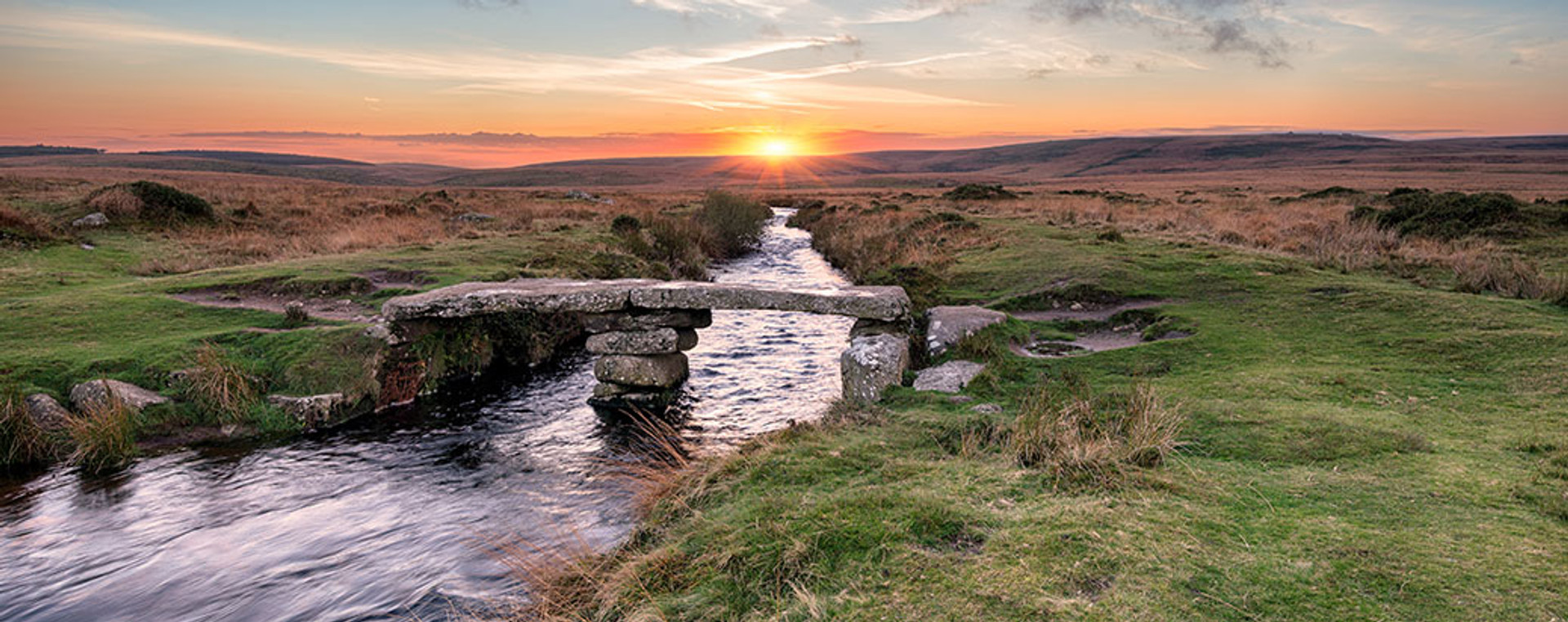


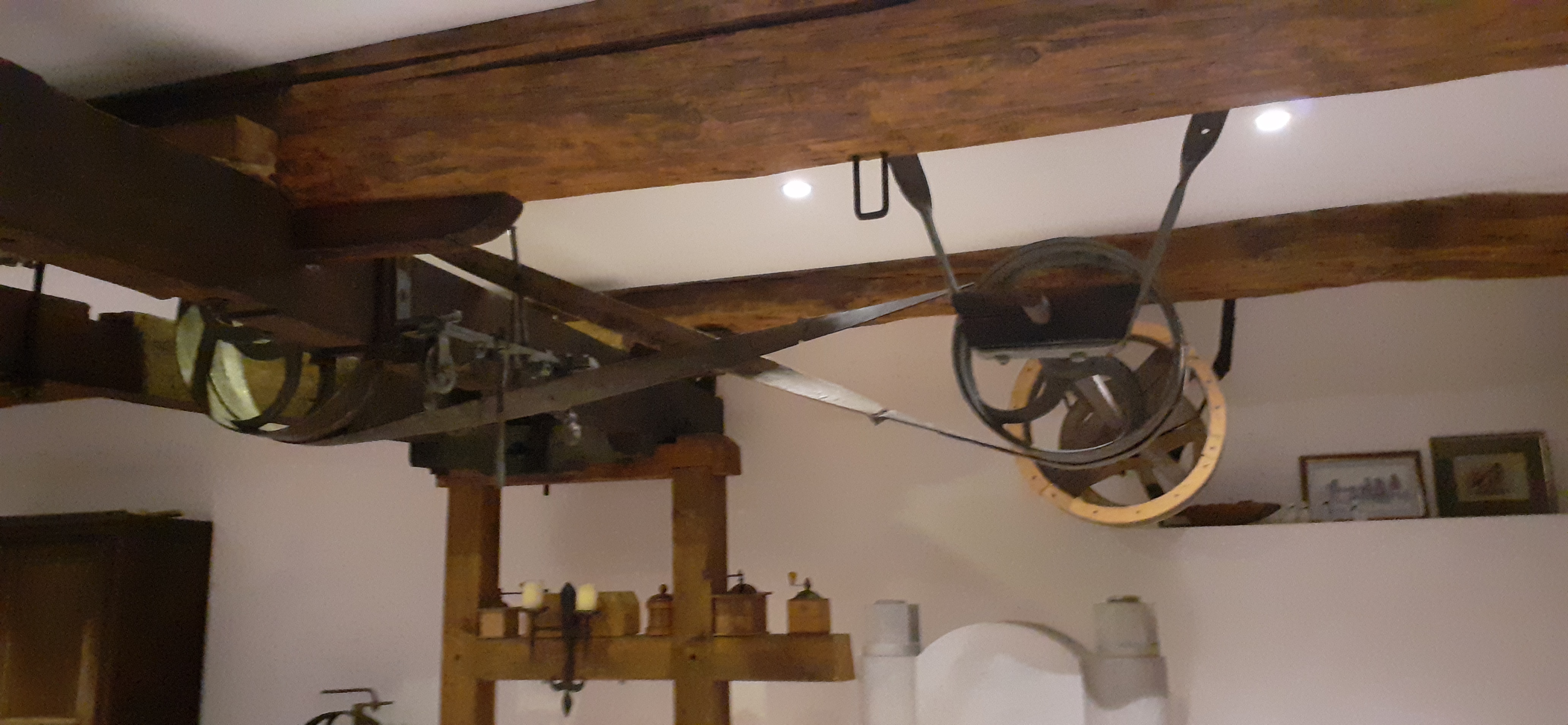
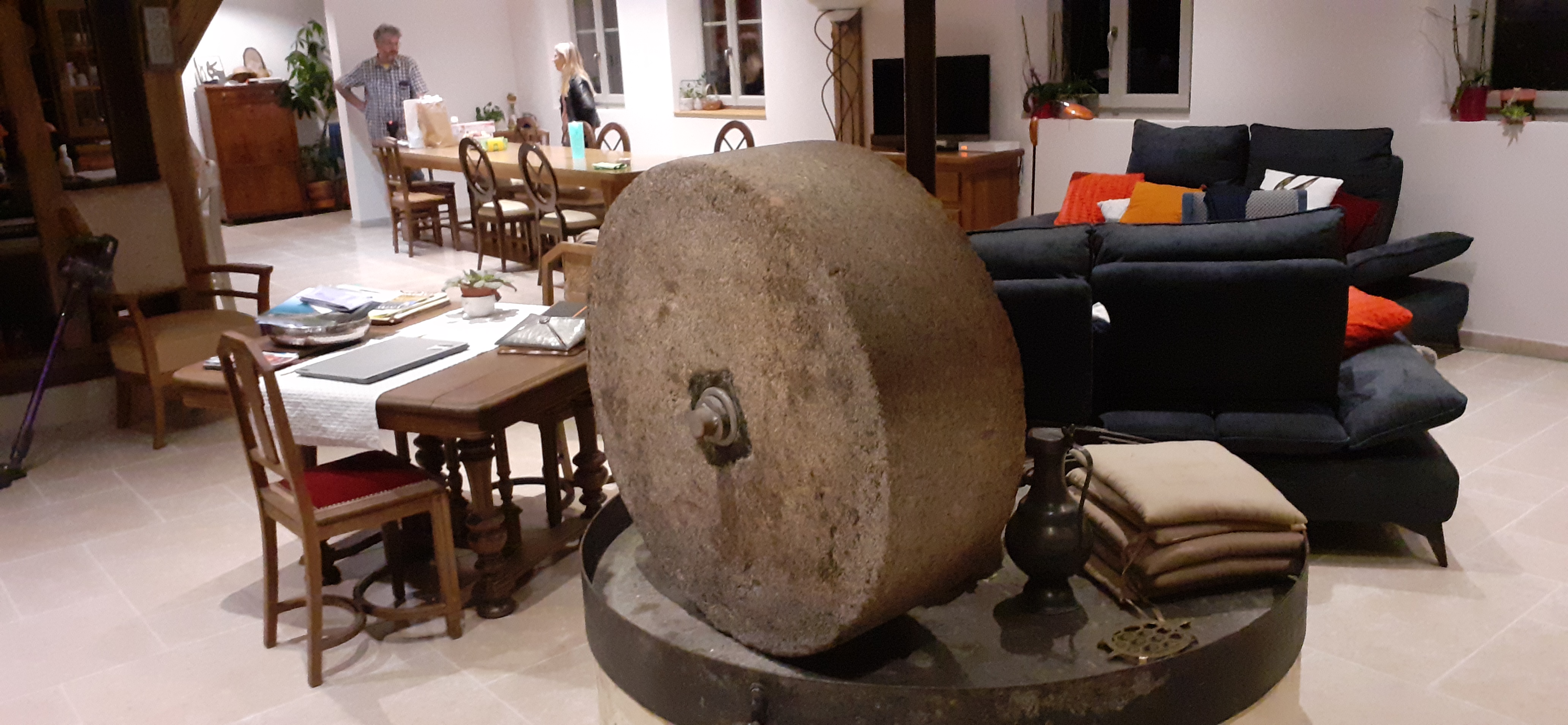
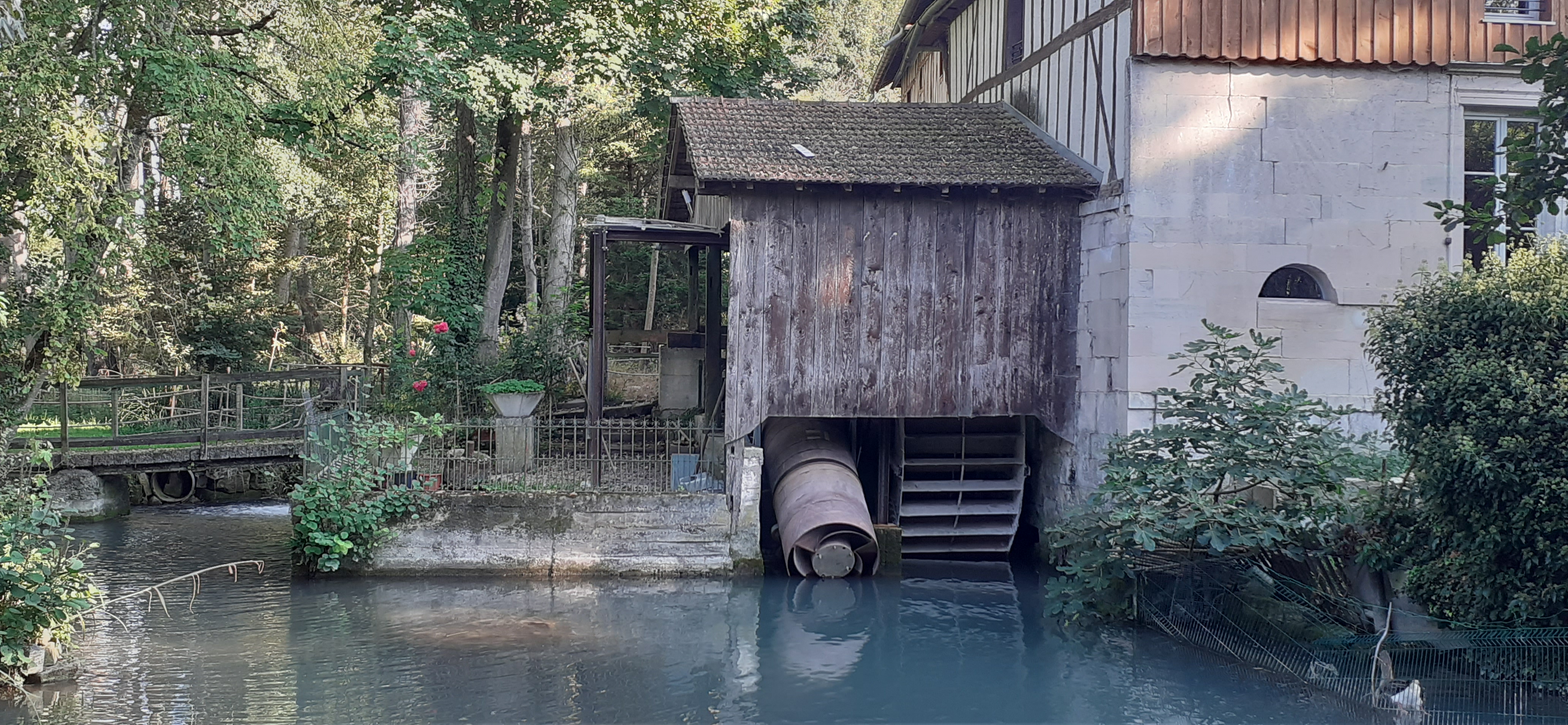
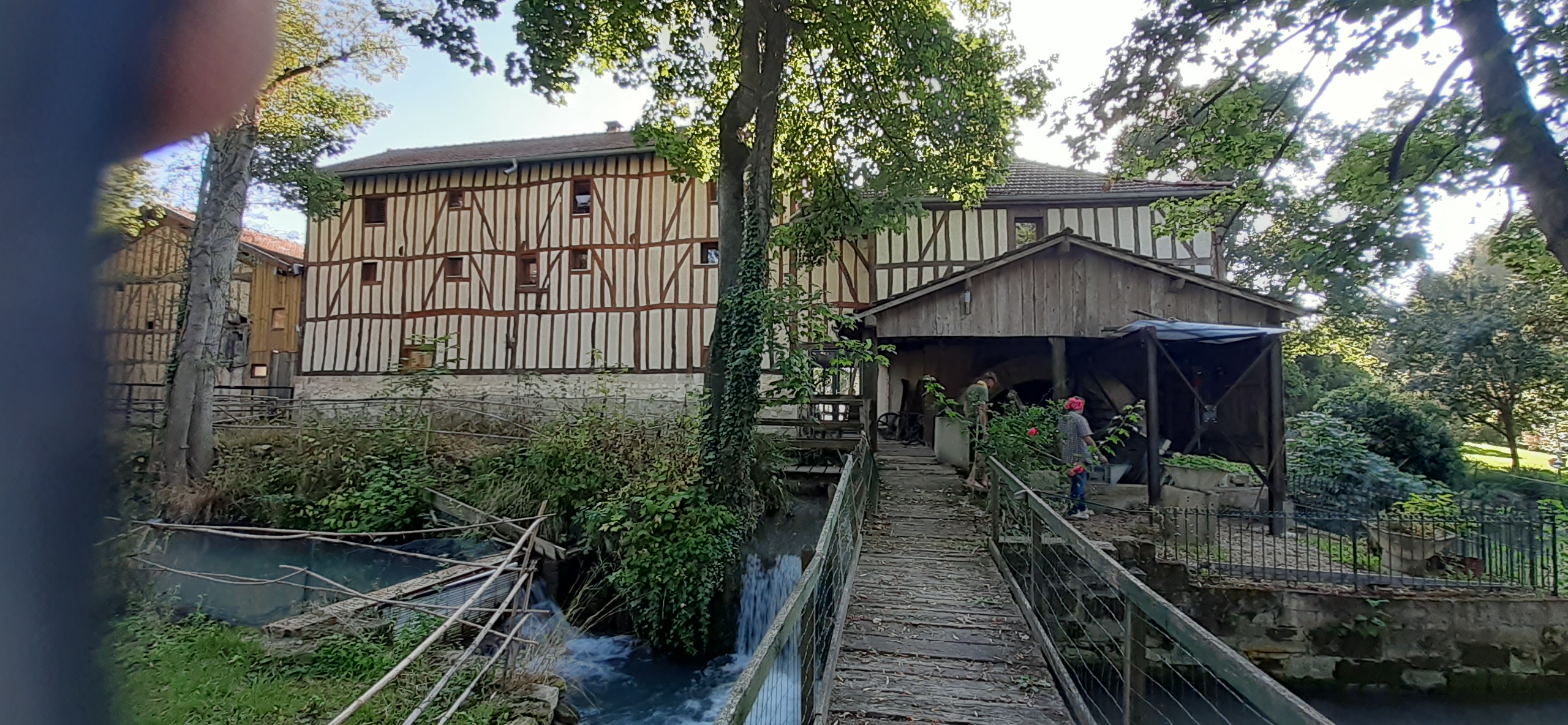
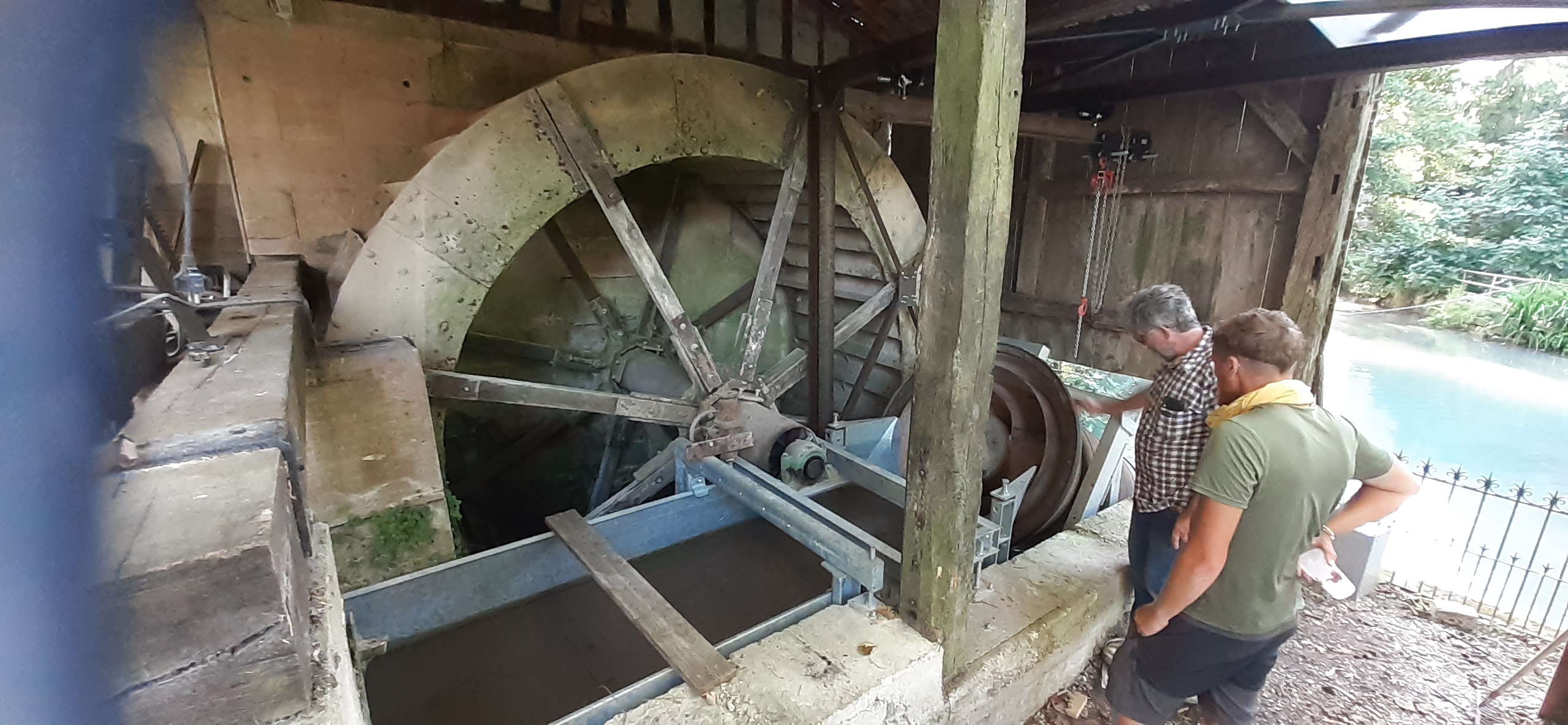
Leave a comment